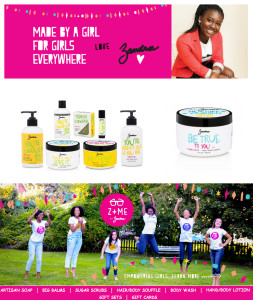It’s that time of the year again. If you are a small seller like me, you know that now is the time to get your Christmas inventory ready. If you are really good, you are already planning for Valentine’s Day. If you are a new seller and don’t know where to start for the holiday season this post is perfect for you. One of things you may be asking is where do we get our products? I have been selling items online for years and have learned a few lessons about selling so here are a few tips:
You can create your own: It is self-explanatory. Make your own products. This requires a lot creativity but before making anything find out what sells. Go to your competitors websites and find out what their top sellers are or even better, create something new. Then figure out the cost of how much it will be for you to acquire the raw materials to make the product and of course calculate how much profit you will make. This is time-consuming but cheaper. Plus you are not dependent on large manufacturers or wholesalers. I’ve seen manufacturers and wholesalers mess orders up and trust me, it wasn’t pretty. There were thousands of dollars lost and a lot of time wasted. If you are like me, a control freak, you want to control the entire process. The thing about creating your own products is that you are solely responsible for your products so you feel a lot more secure and invested in your items when you make them. There are downsides to this. The bad part is that it is time-consuming because you are creating the products and because you are doing it alone it may take you a long time to produce the product. The result is that you are not selling many items so you have a low inventory therefore you are limiting your income.
Go to a manufacturer: (Do this at least a year in advance for the next holiday season for your items to be ready before October.) A manufacturer will make your items for you. Yes, you can have a third-party manufacturer produce your item. Here is a tip, if you are using a manufacturer have them send you a sample item before you make a larger order. Why? Because you save money and can refine, change and also eliminate mistakes during the manufacturing process. I know someone whose products are made by a third-party firm overseas and then shipped here. While they pay a manufacturer to do the work, they are focused on what they were good at which was marketing and selling the product. The upside is that since you are mass producing the item, you can sell to a large group of customers. The down side is that it is expensive to have someone manufacture for you. Another thing is that you are codependent on an outside source and that person may not care for the quality of the item as you do. If you are having a firm from overseas produce your item, there is a good chance, if your item is extremely successful, someone else will copy your product. It comes with the business of third-party manufacturing overseas. They do not have the same laws as here. Finally, you will need a place to store your items. If your operation is huge you may have to purchase a warehouse so think about rent, utilities, taxes and other costs. If you sell on Amazon you can send your products to them for their fulfillment services. The downside is that Amazon charges more which cuts into your profits. If your items do not sell after a certain time they will ship them back to you or destroy them.
Try checking out wholesalers and liquidators: What is a wholesaler? A wholesaler buys directly from the manufacturers and sells items in bulk for low prices to resellers (you) so that you can sell the item at full price. The awesome thing is that the products are already made. The down side is that you may have to package them, you usually buy these items in bulk and everyone else is probably selling them too. Another downside is that some wholesalers require a business tax identification. This option may require renting out commercial space to store your products.
You can find incredible deals from a liquidator. Liquidators usually sell items that are store returns, salvage (can sell items for parts especially electronics), store displays (is usually unboxed) and new items from other stores, distributors and even government agencies. The great thing about a liquidator is that you can buy things in bulk for incredibly low prices and I mean low. The products are usually boxed and immediately ready for sale and did I mention they are inexpensive. Buying from a liquidator could be hit or miss. There are things you must do when purchasing from a liquidator. You have to figure out why these items are at a liquidator. Research each item and see if the item is selling. Next ask yourself how much are they selling for, how many competitors do you have, is the market over saturated and what kind of profit will you make. Before purchasing figure out if you want to use new or used products. This affects your selling price and profits. Buying new items means you have to spend more money but you can sell the item for full price. Purchasing used items means the item will be cheaper but you will sell the item for a reduced price. When you purchase from a liquidators test your items make sure they work and if they are perishable items make sure the items are not expired. Remember if the item is new, it probably did not sell well or the original owner purchased too many. If the former is the case you can get around it by extreme targeting your consumers.
Look for part II tomorrow.








